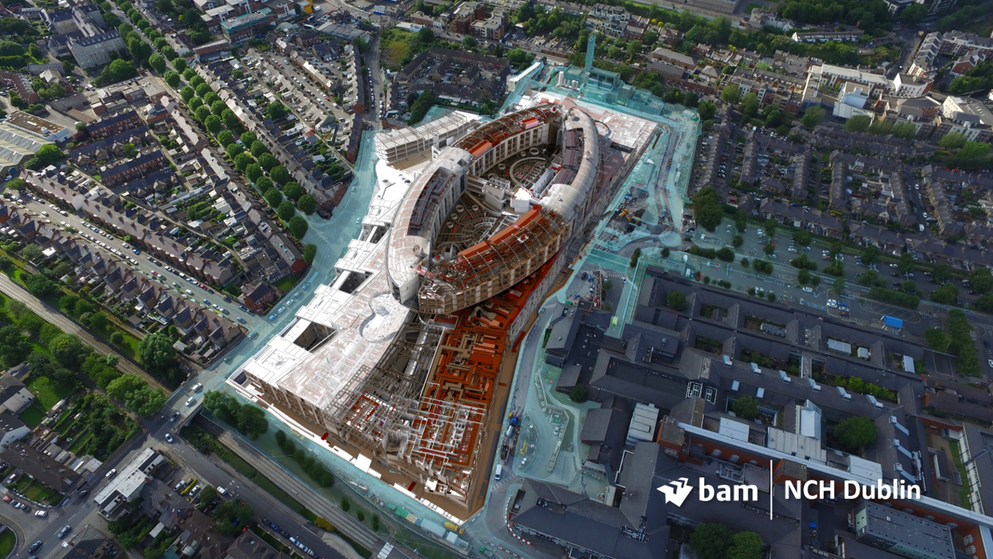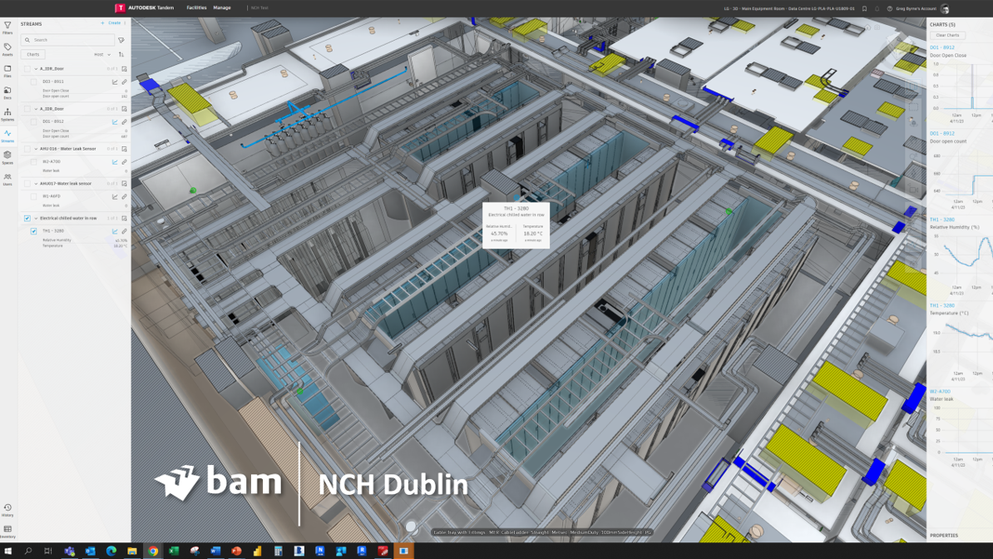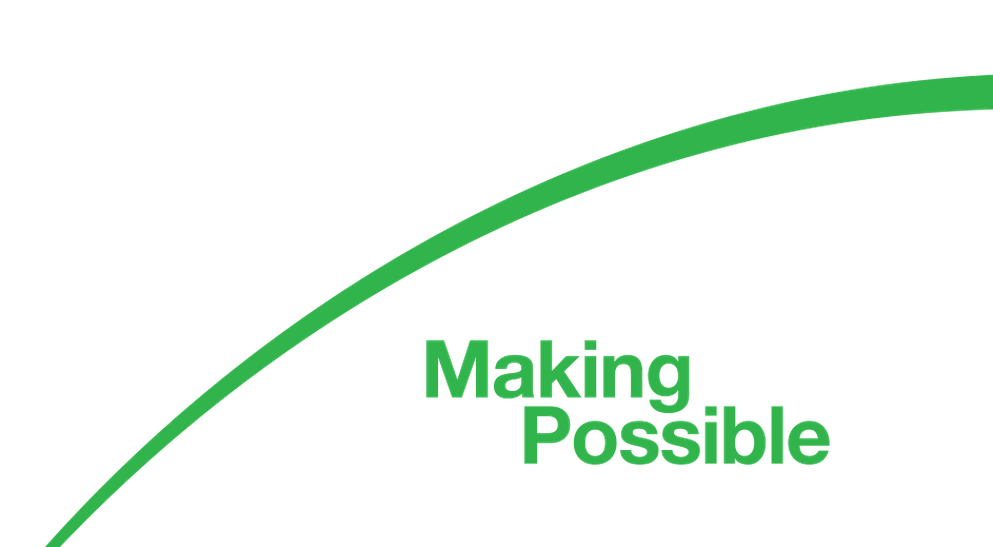
Is there really a business case for digital construction?
By Simon Finnie
Is there really a business case for digital construction?
Digital must bring business and tech together
In today's fast-paced environment, it's easy to get caught up in the hype surrounding new technologies. Even just over the past five years, we have seen an exponential rise in the number of new technologies in the digital construction field, leveraging AI, Blockchain, IoT, AR/VR and more. But the truth is that not all digital technologies are created equal, and investing in the wrong technology can be a costly mistake.
Like any investment, with digital construction, it's important that we understand what value it will bring to our business. We need to ask ourselves: how will this technology help us achieve our business goals? What specific benefits will it provide? How will it improve our operations, customer experience, or bottom line?
I recently had a situation where a team requested a significant capital investment in an AI-based technology for construction sites, but with no assessment or understanding of the benefits the capability would bring. When I asked them why we would invest money in this, rather than other innovations, their answer was that “it was ground-breaking technology”. This is not good enough.
To bring business and technology together, both sides need to understand the value and benefit of a digital construction investment and assess it against the cost. As I often remind people at BAM, one of our two primary roles is to deliver value for our shareholders (the other being ensuring that we provide a safe environment for our employees). What that means is that every pound or euro needs to justify itself in terms of the benefit it delivers to our business and our clients.
In my experience, this is a way of thinking that is often lacking when we consider digital construction. Common sense tells us that digitising many aspects of construction and Engineering that have remained paper-based for hundreds of years must yield benefit, but we often struggle to objectively measure it. This is not a criticism; often, it is so challenging to implement a new system and gain adoption by a typically change resistant workforce that quantifying benefits becomes an afterthought.
But if we really want to digitise our business and drive adoption of all of the brilliant tools and systems, then we need to bring business and technology together. It is no longer acceptable to invest in technology without a strong business case that details the benefits that it will bring and for all parties to work together to deliver them.

Simon Finnie at Digital Construction Week
The ‘external’ view of digital construction
A good indication of the strength of the value of digital construction is the amount of investment it has attracted over the past few years. Global Venture Capital investment has grown more in construction tech than any other single sector. For example, US VC investment in construction tech start-ups totalled $1.3 billion in H1 2022, up 44% from H2 2021.
The construction industry has been slower to adopt technology compared to other sectors, which creates a unique opportunity for start-up founders with innovative products and ideas. With fewer established tech companies in the space, there is more potential for new players to gain market share.
Investment in construction tech spans both software and hardware companies. Software companies like Autodesk and Bentley focus on streamlining financial, contracting, and construction processes to improve efficiency. Hardware companies are dedicated to creating physical goods and services such as robotics, better materials, and building components that reduce the time and cost of construction projects. All of these technologies are transforming the way we build everything from homes and offices to highways and ports, making construction faster and more cost-effective than ever before.
We need new metrics for digital construction
So, it’s clear that external finance see inherent value in the sector, but what is needed is something that supports executive decision-making in this field. We need a more effective measure of digital investment than just the standard ROI (the net gain from the investment divided by its cost). Mainly because, it is often very difficult to accurately calculate the true benefit, and to some extent the true cost, of digital construction.
Erik Brynjolfsson, a professor at Stanford University’s Institute for Human-Centered AI (HAI) and author of The Second Machine Age is a prominent researcher on the economics of technology. His argument is that given the far-reaching impact of digital technology. traditional business metrics are inadequate to capture its full benefit. Brynjolfsson argues that standard measures like productivity and error avoidance do not fully capture the benefits and costs of digital technologies, and that new metrics are needed to evaluate their impact.
In BAM, we are developing an improved way of evaluating investments in digital. One that provides a weighting against a wider set of criteria than just ROI. Instead, we look at factors including: strategic alignment; productivity gain; realisable cost reduction; risk reduction; employee engagement; and client impact. There is still further work to be done to ensure that this meets our requirements, but it is a step in the right direction.
BAM’s digital twin capability
To demonstrate our approach, I will use two examples from our digital twin capability. At BAM, we are fortunate in covering the full lifecycle of services to the market, from upfront investment and design to long-term facilities management. To ensure that drives maximum value for our clients and our business, we have made careful and strategic investments in our digital twin capability.
For us, the focus of digital twins is in ensuring maximum collaboration between those who are designing the asset, those who are constructing it, and those who are operating and maintaining it over its life-time.
We believe there is a strong business case in digital twins, including the benefits of:
1. Improved design maturity: digital twins help us optimise the design and allow us to assess design choices over the whole lifecycle of the asset. For example, it might be that a more expensive solution up front will still be cheaper when looked at for its whole life cost.
2. Enhanced maintenance, including predictive maintenance: digital twins enable predictive maintenance by monitoring and analysing data from sensors and other sources in real-time. This can help businesses identify potential issues before they cause downtime or other problems, improving asset utilisation and reducing maintenance costs.
3. Better operational transition: digital twins support the often difficult transition between construction and FM by providing a digital solution that is far more robust and comprehensive than previous non-model based ones. This helps reduce mistakes, waste, and increases efficiency.
4. Improved customer engagement: We use digital twins to provide our clients with better information and insight into how their assets are performing. From schools and hospitals to complex infrastructure we help our clients by enabling them to monitor and analyse their data in real-time.
We do all of this not because it is ‘ground-breaking’, but because it has a strong business case. The use of digital twins helps us improve the service we offer. It increases revenue, reduce costs, reduces risk, improves safety and quality, and enhances customer satisfaction. This is why we do it and to demonstrate this, I will now offer two examples.

New Children’s Hospital, Dublin
New Children's Hospital in Dublin is the largest government project in the history of the Irish state. The hospital is approx. 160,000m2 of accommodation with 6,150 rooms in total, with 380 individual inpatient rooms, each with an en-suite and bed for parent to sleep near their child, 93 Day Beds and 22 operating theatres and procedure rooms. The hospital will have 1,000 underground car parking spaces. When completed the project will be the size of a medium town centre, with an internal street the length of most high streets. The hospital also has 4 acres of outdoor areas with 14 gardens and internal courtyards.

We’ve been working with Autodesk Tandem on NCH. For example, we have a Data Room in the NCH project that was required to be handed over to the client just over a year prior to completion to allow the chosen IT supplier to buildout in line with handover. Climate and environmental conditions surrounding this room are as challenging as you would expect from a construction site so the necessary safeguard were implemented to ensure it was kept stable. We have used IOT sensors connected to Autodesk Tandem to bring the live data into the federated model giving greater context to the live streams.
Temperature, humidity, water leak detection, door movement and video feed can be all viewed in the one location within Autodesk Tandem. This ensured that the Data Room has been ‘protected’.
In addition, and for the first time on one of our projects, we have started using OpenSpace to rapidly capture the progress on site quickly and efficiently. With a 360° camera positioned on our employee’s hard hat, they just walk through the NCH site and the OpenSpace Vision Engine maps the photos to our plans automatically. This gives us a complete, as-built record of the building from preconstruction to handover and eventually operation.
Again though, we do not invest in this technology altruistically. We did it with a strong business case that sees reduced walk-rounds, quicker documenting of progress (with removal of paper forms), improved scheduling, and reduced disputes with supply chain.
Each of these capabilities have had an extremely positive impact on the NCH project and we are all proud of the way the project team have adopted them in to their everyday lives, but more than this, we have been tracking the benefits associated with them in line with our new Digital Evaluation. And whilst the project is still ongoing, early indications are that they will score highly on the criteria, especially productivity gain and risk reduction, which are a particular focus at NCH.
Taking digital to a new level in FM
BAM FM are one of the leading Integrated Facilities Management companies in the UK, offering a wide range of services and energy solutions to a large number of public and private organisations. Our aim is to safely and effectively serve our clients, whilst reducing the carbon impact associated with everything we do. Key to this is our digital strategy which has positioned us as one of the leading digital FM providers in the sector.
From working with various partners including Autodesk and Concept with a view to demonstrating the value of establishing a two way link between the BIM and CAFM system in everyday operation. This is not a trivial exercise and required us to determine a new asset taxonomy, and then apply it to the existing data sets and integrating it into the CAFM system. However, doing so, significantly increased overall efficiency, especially Planned Maintenance scheduling, ‘Faster First Fix’ Reactive Maintenance, and improved PPM delivery by having prior knowledge of plant and associated services.
As I mentioned previously, we are actively developing our digital twin capability and BAM FM are particularly focused on combining data from various data sources to present these to both our clients and internal maintenance teams.
To take this even further, we need more data to drive even better insight and so as part of our Smart Assets initiative, we have introduced predictive maintenance sensors across the estates we manage. These sensors detect changes in operating temperature, vibration and noise and with the use of AI we can predict changes in the performance of critical items, such as plant – moving to a predictive maintenance model. The introduction of a Smart Assets Platform incorporating alerts from predictive maintenance sensors, environmental sensors, BMS alerts in combination with building energy consumption data.
The Smart Assets initiative has a very strong business case with significant benefits for both us and our clients, including:
1. Improved safety: By proactively identifying potential equipment failures, we can take steps to address safety risks before they become serious.
2. Improve energy efficiency: The integration of Energy, BMS and Occupancy Sensor data helps us to drive building efficiency and support our clients in their carbon reduction goals.
3. Reduced downtime: By predicting when equipment failure is likely to occur, we can proactively schedule maintenance during planned downtime, reducing the need for unexpected and costly repairs.
4. Improved asset utilisation: We optimise the performance of their equipment by identifying potential issues before they lead to failures. This extends the life of the equipment and reduces the need for costly replacements.
5. Lower maintenance costs: Predictive maintenance allows us to prioritise maintenance activities based on the actual condition of the equipment, which can help to reduce unnecessary maintenance costs.
Overall, Smart Assets means we can help organisations to optimise their FM, reducing costs, improve safety, and addressing their sustainability agenda.
There is a business case for digital construction
Overall, digital construction capability can provide businesses like BAM with a competitive advantage by enabling them to optimise their operations, improve their products and services, and enhance customer satisfaction.
But, digital construction must avoid chasing the latest exciting technology without grounding it in commercial justification. It must not become a solution looking for a problem as this is why many digital construction initiatives fail. To achieve the buy-in, sponsorship and support of the whole business then there must be a clear business case with robustly articulated benefits.
Over my time in the industry, I have seen lots of examples where amazing technology was not successfully rolled-out across the business. This will be because the case for change was not strongly made.
Digital construction needs to bring business and technology together and it can only do that by focusing on outcomes and benefits.
About the author

Simon Finnie
Executive Director - Ventures
Simon is BAM UK & Ireland’s Executive Director for Ventures.
Simon joined Royal BAM Group in 2019 as Chief Transformation Officer (CTO) on the executive committee and led the development and delivery of our 2023 corporate strategy.
Simon has worked across the engineering sector for over 20 years, holding senior positions within several leading companies, including Laing O’Rourke and Kier.
Passionate about people and digital transformation, Simon believes the real key to growth and to future proofing our business is putting diversity and inclusion high on the business agenda.

